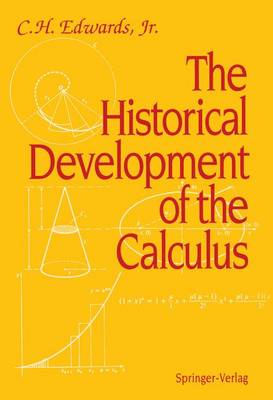Springer Study Edition
1 total work
The calculus has served for three centuries as the principal quantitative language of Western science. In the course of its genesis and evolution some of the most fundamental problems of mathematics were first con- fronted and, through the persistent labors of successive generations, finally resolved. Therefore, the historical development of the calculus holds a special interest for anyone who appreciates the value of a historical perspective in teaching, learning, and enjoying mathematics and its ap- plications. My goal in writing this book was to present an account of this development that is accessible, not solely to students of the history of mathematics, but to the wider mathematical community for which my exposition is more specifically intended, including those who study, teach, and use calculus. The scope of this account can be delineated partly by comparison with previous works in the same general area. M. E.
Baron's The Origins of the Infinitesimal Calculus (1969) provides an informative and reliable treat- ment of the precalculus period up to, but not including (in any detail), the time of Newton and Leibniz, just when the interest and pace of the story begin to quicken and intensify. C. B. Boyer's well-known book (1949, 1959 reprint) met well the goals its author set for it, but it was more ap- propriately titled in its original edition-The Concepts of the Calculus- than in its reprinting.
Baron's The Origins of the Infinitesimal Calculus (1969) provides an informative and reliable treat- ment of the precalculus period up to, but not including (in any detail), the time of Newton and Leibniz, just when the interest and pace of the story begin to quicken and intensify. C. B. Boyer's well-known book (1949, 1959 reprint) met well the goals its author set for it, but it was more ap- propriately titled in its original edition-The Concepts of the Calculus- than in its reprinting.
